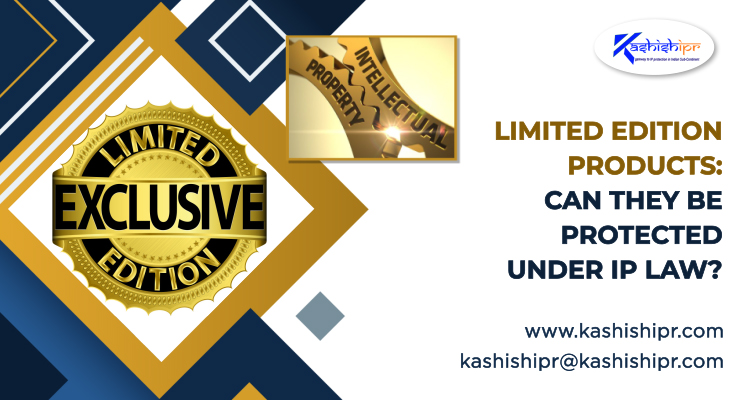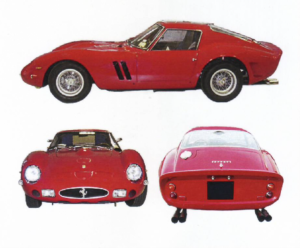Limited Edition Products: Can they be Protected under IP Law?
 Posted On
Posted On
Several times, we see that luxury brands come up with limited edition products, whether it is cars, watches, cosmetics, chocolates, electronics, etc., and enthusiasts do not spare even a moment to get their hands on these products. Limited edition means that the company sells ‘altered’ limited units of an original best-selling product that already exists at a higher price, or it could even be a limited number of products that are manufactured and sold. The aim is to generate credibility and attract consumers by showing the exclusivity of the product. A critical issue to be addressed is whether these limited-edition products can get protection under Intellectual Property (IP) law, just as regular products do, and if yes, then which is the most appropriate form of IP Protection?
Protection for Limited Edition Products under Trademark Law
The biggest challenge that arises when it comes to protecting a limited edition product as a trademark is showing continuous use of the trademark. As we know, limited edition goods come into the market only for a short period, are marketed by the brand upon the launch, and the logos are hardly ever put into use by the proprietor because they have already been sold. The brand does not create more of these to maintain the attractiveness and exclusivity associated with the limited or special edition products.
This issue was very recently seen in the case of the limited-edition Ferrari 250 GTO. Ferrari registered the trademark to protect the shape of its 250 GTO model back in 2008, despite only having manufactured the cars between 1962 and 1964. Ares Design, an Italian car manufacturer, filed a cancellation action against Ferrari’s mark by arguing that it had not been used for a continuous five-year period. While Ferrari was able to show that the shape mark had been used concerning toy cars, EUIPO found that the mark had not been used for vehicles in the relevant five-year period. As a result, Ferrari’s mark was cancelled concerning vehicles due to non-use but remains valid for toy cars. This decision could potentially allow other car manufacturers to produce cars in the same shape as Ferrari’s 250 GTO. The shape was once eligible for protection as a registered design, but designs can only last for a maximum term of 25 years in the EU. Even in other jurisdictions, design rights last only for a limited term and cannot be renewed. The only possible workaround in such cases is to keep using the mark on other products, such as toys in Ferrari’s case. However, that will still not prevent other car manufacturers from using the shape mark on actual vehicles.
Unlike other Intellectual Property Rights (IPRs) such as patents, designs, and copyright, trademarks can last indefinitely provided they are renewed. However, trademarks may also be subject to use requirements – they may be canceled or ‘revoked’ if they have not been used within the five years following registration or within any other continuous five-year period during the trademark’s life. In essence: ‘use it or lose it.’

The Ferrari 250 GTO Shape Mark (Source: EUIPO)
How about Copyright or Design Protection?
Design Registration is only available if the design is novel at the time of registration. If the design of the limited-edition product is novel, seeking design protection is a good option. The only disadvantage is that Design Protection is only available for a limited period, unlike trademarks, which can be renewed and protected in perpetuity.
Copyright Protection is also theoretically available and is for a longer-term than design, but there are some specific challenges in this case as well. First, there is uncertainty whether utilitarian objects can be granted copyright protection. Many countries either do not grant copyright protection or set the bar very high for the originality requirement.
Final thoughts: Which is the Best Form of Protection?
The solution to protecting limited edition products lies in a combination approach. Limited edition trademarks that comprise original artistic device elements may also enjoy protection under Copyright Law. While the requirements of distinctiveness under Trademark Law and originality under copyright law differ, the protection afforded to artistic works should usually apply to limited edition trademarks. Copyright is considered to subsist in a creative work upon creation once it has been rendered in tangible form. Therefore, relying on copyright protection requires some organization and effort by the rights holder; for instance, by making an appropriate assertion of the IPRs and keeping detailed records of the creation of the variant trademark. Another clever way of protecting a limited edition product is to make the trademark not too different from the original mark or rather build upon the original mark with slight variations in the artistic elements. For example, the following image shows a limited edition chocolate bar that Cadbury had come up with once. The mark is formed in such a manner that it utilizes the original trademark of Cadbury along with the new elements.

Furthermore, ornamental elements, packaging, etc., can also be protected as a design since they are novel. It will not be too difficult to obtain copyright protection on the artistic expression of ‘SPECTACULAR’ either, since it is a tangible expression of an original artistic idea. It is ultimately up to the proprietor to decide the form of protection that is best suited to his or her particular situation. Having a tactical approach to protecting limited edition products is a necessity for safeguarding one’s IPRs. If planned well in advance, a combination approach can prove to be useful in the protection of such limited edition products for a long duration. ✅ For more visit: https://www.kashishipr.com/
